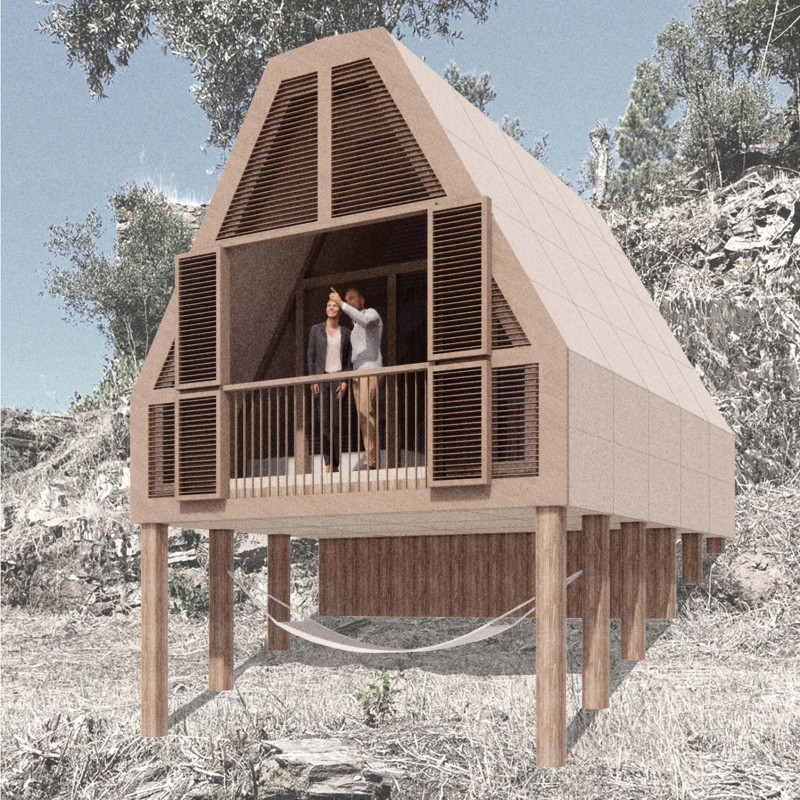5 key facts about this project
Functionally, "Cork A" serves as a compact living space that accommodates essential residential needs. The layout efficiently incorporates a bedroom, bathroom, and an open living area that seamlessly connects to outdoor spaces. This internal organization allows for optimal use of space while promoting comfort and usability throughout different seasons. The inclusion of large glass openings not only invites natural light but also creates a visual dialogue with the surrounding landscape, reinforcing the project’s focus on connectivity with nature.
Key features of "Cork A" include its elevated design, which is supported by minimalistic stilts. This approach reduces the environmental impact of the structure by minimizing disturbance to the terrain and enhancing wildlife mobility. The A-frame form, characterized by its sloping roofline, elegantly channels water and snow, while its simplicity pays homage to traditional architectural vernaculars. The exterior cladding, composed primarily of cork, supports thermal insulation and durability, making it an ideal material choice in varying climatic conditions.
The interior of the building is designed with an emphasis on efficiency and comfort. The open-plan living area fosters interaction and flow, allowing occupants to experience a sense of spaciousness. Sliding glass doors extend the interior into an outdoor terrace, creating opportunities for outdoor living and enhancing the overall livability of the space. This design decision highlights the importance of integrating indoor and outdoor environments, enhancing user experience through biophilic design principles.
Sustainability is woven throughout the project in various innovative approaches. The thermal properties of cork maintain a comfortable internal climate, negating the need for extensive mechanical heating. Additionally, features such as cross-ventilation systems and strategically placed shading devices illustrate a proactive approach to energy efficiency. The incorporation of a gray water treatment system further supports the project’s sustainability goals, promoting responsible resource management.
In terms of design uniqueness, "Cork A" embodies a philosophy that respects the ecological context while incorporating contemporary architectural ideas. The choice of utilizing locally sourced materials demonstrates a commitment to sustainability and regional identity. The project not only provides an exemplary model of eco-friendly living but also invites exploration of architectural ideas that prioritize environmental integration.
Overall, "Cork A" stands as a noteworthy example of contemporary architecture that merges efficient design with sustainable practices. Its emphasis on functionality and materiality ensures that it not only serves its occupants well but also respects and enhances its surrounding environment. Readers interested in delving deeper into the intricate aspects of this project are encouraged to explore the various architectural plans, sections, and designs that reveal the thoughtful considerations and innovative solutions embedded within "Cork A."


























